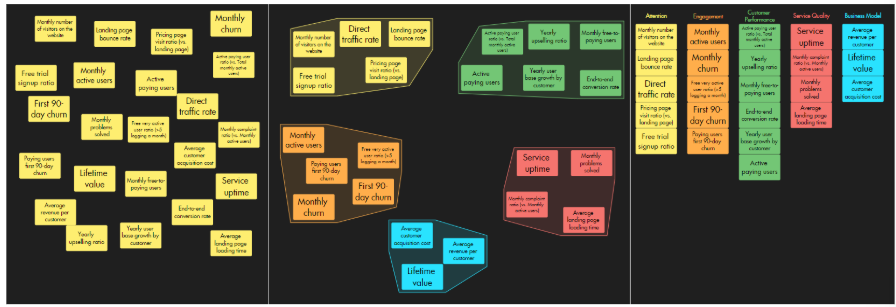IB DT: Topic 7.4: Strategies for UCD
1/10
Earn XP
Description and Tags
credits https://docs.google.com/presentation/d/1wJwrS2w1nvMU27ZpvTA2eYizpmRbEKFPf6DR-wi62_I/present?slide=id.g1009cac4fe3_0_391
Name | Mastery | Learn | Test | Matching | Spaced |
|---|
No study sessions yet.
11 Terms
what do designers gain by including potential consumers in testing designs and prototypes?
designers gain valuable data relating to how they interact with a product
what is involved in primary research?
user trial
user research
field trials
product analysis
observation
better understanding of data/problem due to first hand experience. flexibility and options.
what is involved in secondary research?
literature search
web search
fast and readily available. saves time and money
what is qualitative research?
deals with subjective materials such as words and images
usually uses tools such as interviews and literature search
open to bias and lacks statistical reproducibility
what is quantitative research?
measuring sets of variables and their relationships to one another
built around numbers, logic and objectivity
what is a focus group?
a group interview involving a small number of participants who are demographically similar - or who have common traits/experiences. their reactions to researcher-posed questions are studied.
used for feedback and data collection
controlled meeting of potential users
what is field research?
a first hand observation of a customer’s user experience - conducted in the user’s environment.
companies receive real feedback from users in real time that can be actioned to create and develop products that meet consumer need/demand
can be very expensive
what is a user trial?
a collection of responses from users/trail of observation of users interacting with the product
creates primary, quantitative data
what is an affinity diagram?
a graphic tool designed to help organise and classify loose unstructured ideas generated in brainstorming.

what is the process for creating an affinity diagram?
identify a general theme
collect facts, opinions and ideas
express and enter the data in a common format
identify groups/clusters
cluster the data
repeat 4 and 5 to form super clusters
present the results
what is paper/low fidelity prototyping?
an example of participatory design
representative users perform realistic tasks by interacting with a paper version of the interface that is manipulated by a person who doesn’t explain how the interface is intended to work